Back in issue 106 freelance concept artist Juan Pablo Roldan talked with us about his inspirations, techniques and experiences of creating creative and realistic concepts video games and films…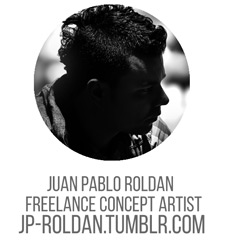
If you like sci-fi, you’ll love the creative and realistic concepts of Juan Pablo Roldan. This Colombian artist is the creator of impressive futuristic illustrations where spaceships, giant cities and soldiers feature heavily. He left his graphic design job behind in 2011 to follow his dream of working in the film and video game industry and soon landed his first role as a concept artist producing designs for Space Empire Games. Roldan chats with us about his journey, where his draws his inspiration from for his epic pieces and experimenting with tools, techniques and style.
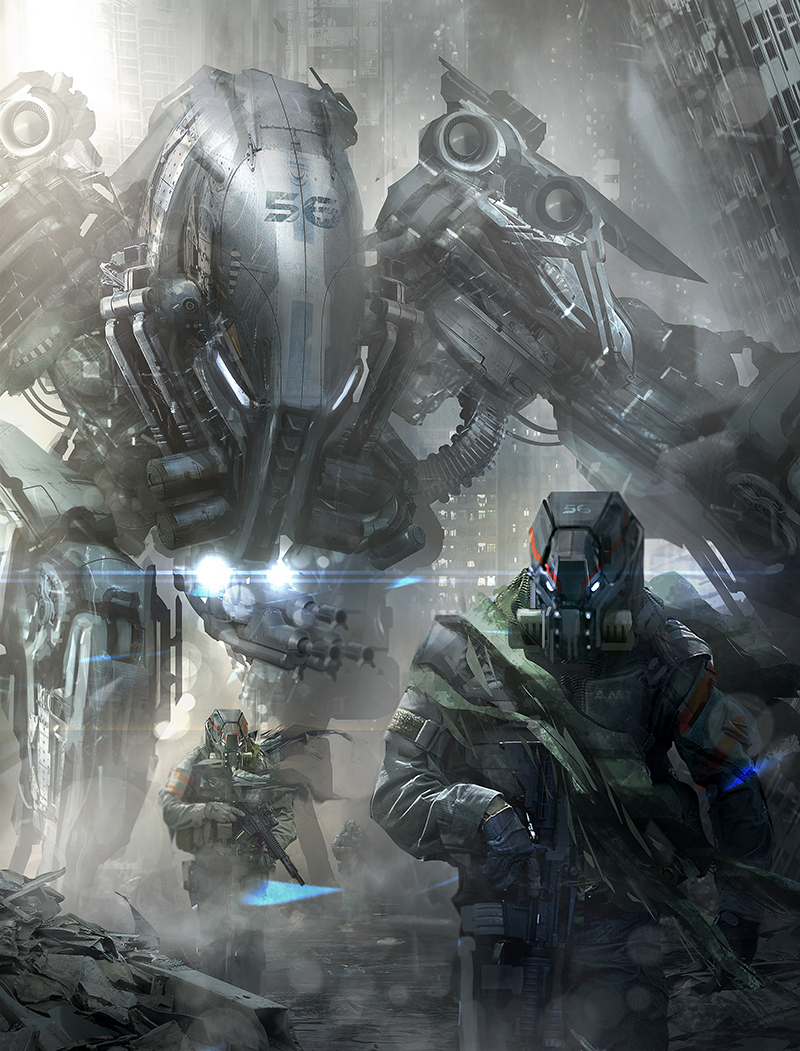
Here, Juan wanted to depict a dystopian future with a giant robot giving back up to special forces team
Hi Juan, thanks for chatting with 2dartist today! First, could you tell our readers a little bit about yourself and your background in digital art? Where did it all begin?
I studied graphic design and worked for seven years at two recognized advertising agencies.
Although my job as a graphic designer was a great experience and I learned a lot from very talented people and made good friends, I always had this feeling that something more was expected of me. My passion for illustration led me to seek alternatives where I could apply my creativity.
In 2011 I began to focus on learning the methods of concept art and later that year I received my first job as concept artist for an independent game studio in Canada. At that time I decided to leave my work as a designer and embrace the opportunity I was waiting for! Simultaneously I started developing concepts for different local and international writers.
After six months into my first job as a concept artist, I learned new tools and techniques that began to attract the attention of other studies and writers, so I got my second freelance job for a graphic novel and simultaneously I started working for the Spanish writer Juan Goméz Juarado, author of several best seller and then planned to bring one of his most famous stories to film. This was my first job as a concept artist for a film project.
After these early experiences, many other projects with various studios and independent developers around the world came. All this quickly brought me some awards and recognitions in various publications in top magazines and books in the industry. I have to say, /2dartist/ magazine and /Digital Art Masters Vol.9/, have been publications that have given me great support and positive opportunities to my career.
In late 2013 I started working as a concept artist for producer Hostage Films in New York in the visual development of a film project from Spanish director Ruben Latre. This year I was invited by the Department of Art and Design of the University of Science and Technology of Taiwan and by the Filmhaus Camp in Singapore to give some workshops and collaborate on visual development of several educational and film projects.
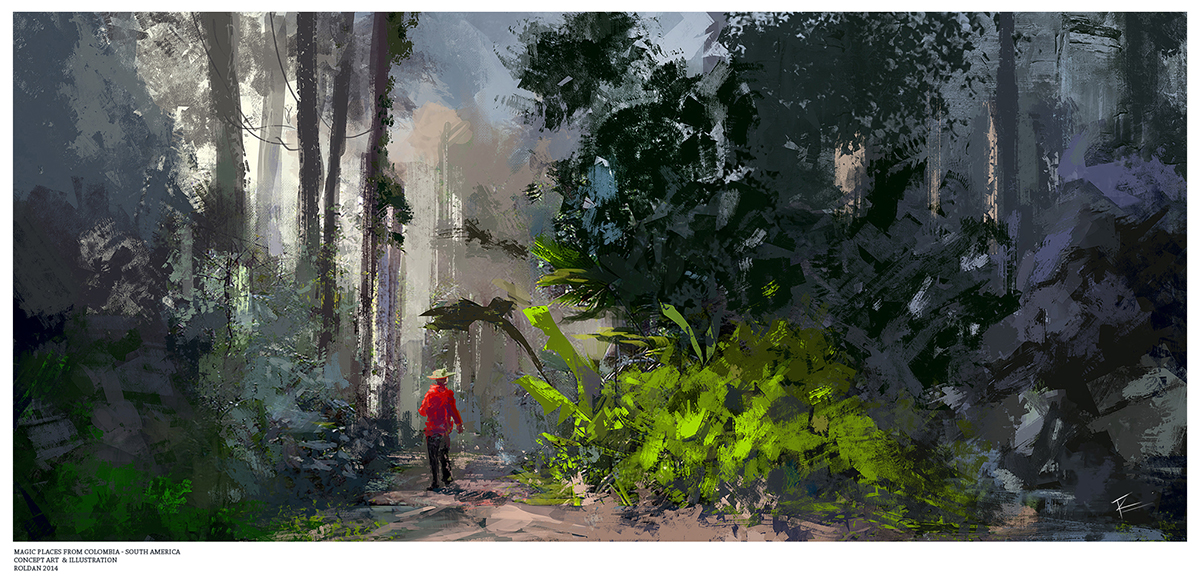
Juan made a series of illustrations to share some of the magical places from Colombia, his home country
What was it about the digital tools that made you want to pursue a career in the industry?
The flexibility and versatility offered to me by various digital tools to express my ideas and the ability to mix and experiment with different resources like textures, colors, shapes, photos, etc, are the reasons why I started with digital art. Also, because I have always dreamed of working in the film and video games industries, and these are the digital tools that they are currently working in the industry.
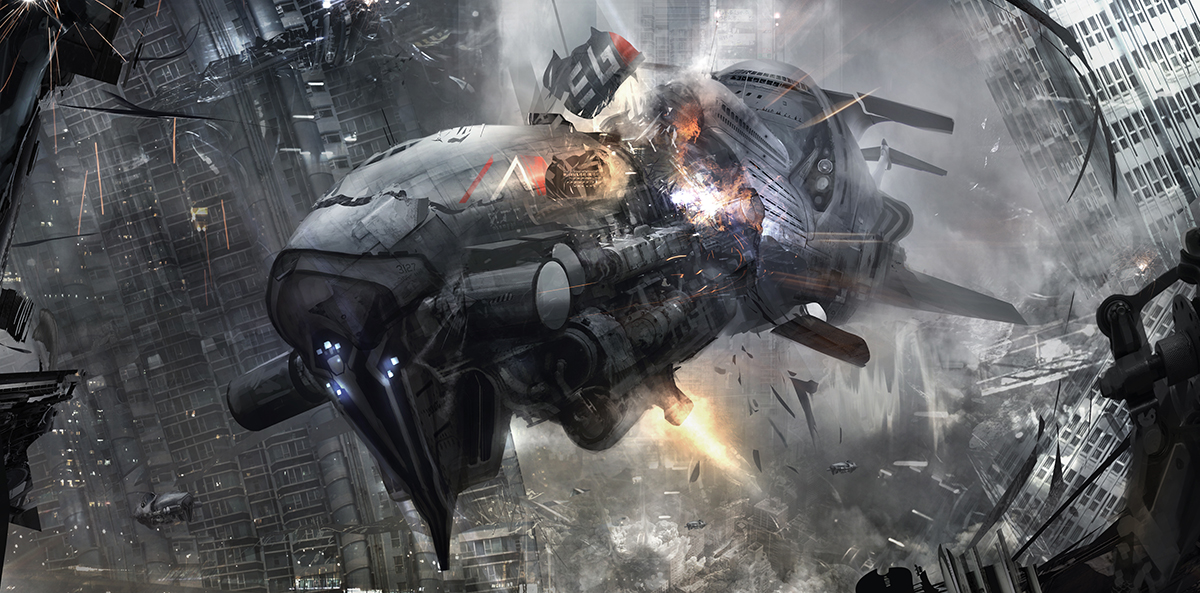
This concept was the second version of the Ark, but in this one Juan wanted to show the fall of this giant ship
Your sci-fi pieces are breathtaking! Where do you draw your inspiration from? What influences your work and motivates you?
Simple, I read and I go to the movies. One of the things I recommend is to read a lot and immerse yourself into the thousands of amazing stories that are out there – whatever the genre is, reading always brings tons of inspiration.
I also like going out and staying in touch with nature, which for me is the greatest source of inspiration. I also like to find quiet places where I can think of where I want to go for my next job.
Traveling and spending time with my girlfriend and my dogs is another way to relax and renew my ideas. I try not to spend much time at the computer too, I like to experiment with ink and other tools, and I’m a big fan of sketchbooks.
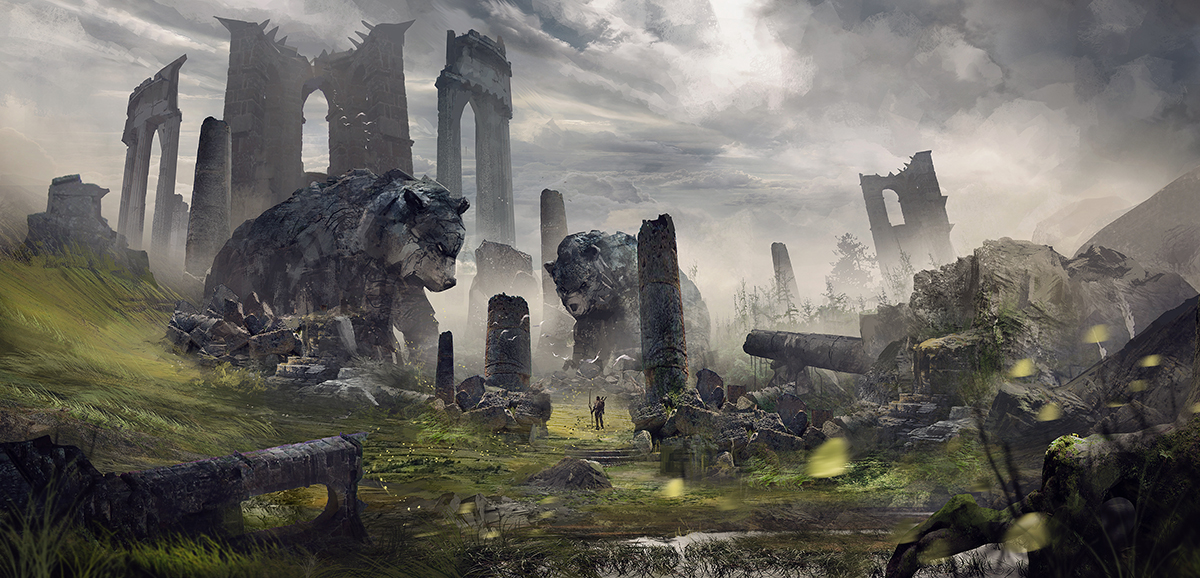
In this illustration, Juan wanted to make an animal sanctuary; the challenge was to draw big Stone bears
Could you choose one of your favorite past images (that you’ve created) and explain a little about its creation, and why it’s your favorite?
To be honest, I don’t have a favorite picture, because I’m still learning and trying to improve my skills. One of the images I’ve enjoyed creating the most though, was /Old Village/. This image was inspired by Chinese culture, its architecture, spirituality, amazing stories of myths and legends. It really is a very inspiring and beautiful culture. I enjoy this process a lot, because I could experiment with more variety of color, elements and shapes.
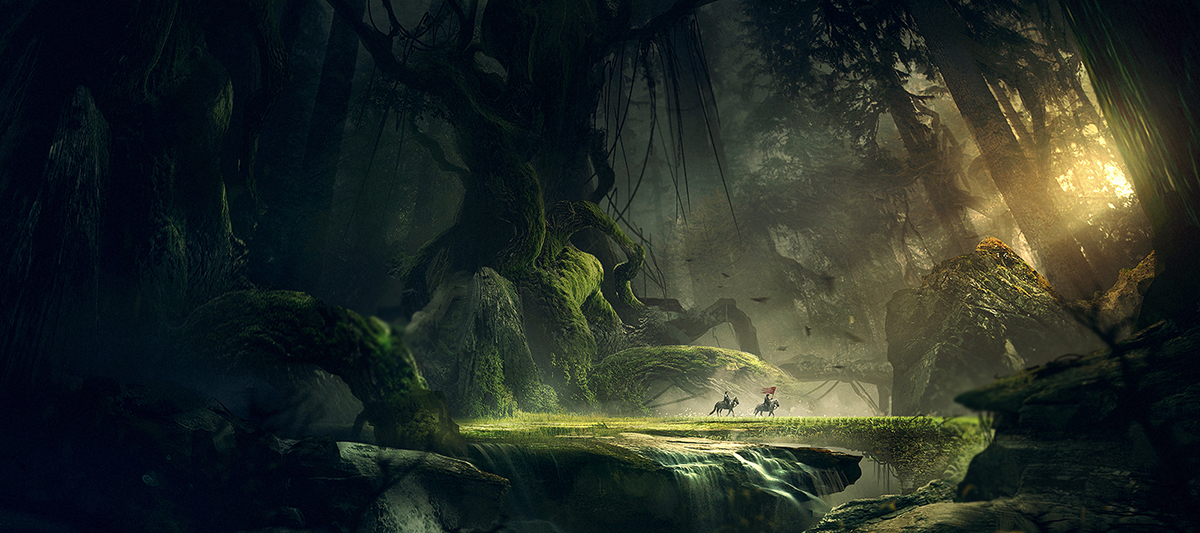
In this artwork, Juan wanted to show two knights crossing a deep forest with a giant magic tree
Do you have any favorite software, techniques or processes that you apply to your artwork, that you would consider your signature style?
I really don’t have a style, or look for one, I just try to experiment with different ways to make my images every time. Sometimes I like to start working with photographs, mixing some textures and looking for that type of reaction that may give a guide to my work, and other times I like to start from my sketchbook, planning each idea more carefully, then go to Photoshop and make some scratches and give them form.
Sometimes I like to use watercolors, markers and inks for unexpected shapes and textures, then I like to try to simulate these similar tools with my tablet, sometimes I use 3D software as the base to start my images.
What I seek is to learn different ways to provide solutions to the briefs that I receive from my clients or find visual ways to develop my ideas – its best to have more than one ace up my sleeve. So really I do not seek a way, I prefer to have many! I like the versatility!

This concept was made after a short travel to some caves near to Juan’s city. After the initial composition, he decided to integrate a couple of imaginary jellyfish to give a sci-fi context to the image
Do you ever practice CG/digital arts as hobby and experiment with techniques and tools in your own personal artwork? If not, how else do you spend your free time away from the demands and deadlines of the creative industry?
As I said before I am always on the search for new methods that allow me to interpret my visions.
I really like to experiment with photography, and I love music and teaching too. I am currently starting a small teaching academy of concept art in my city. So far, I’ve met interesting people and spending time with my students is something I really enjoy doing – just sharing ideas, talking about the latest films, discussing the last book we read, talking about video games, a little history and sometimes trying to create some new stories and drawing them.
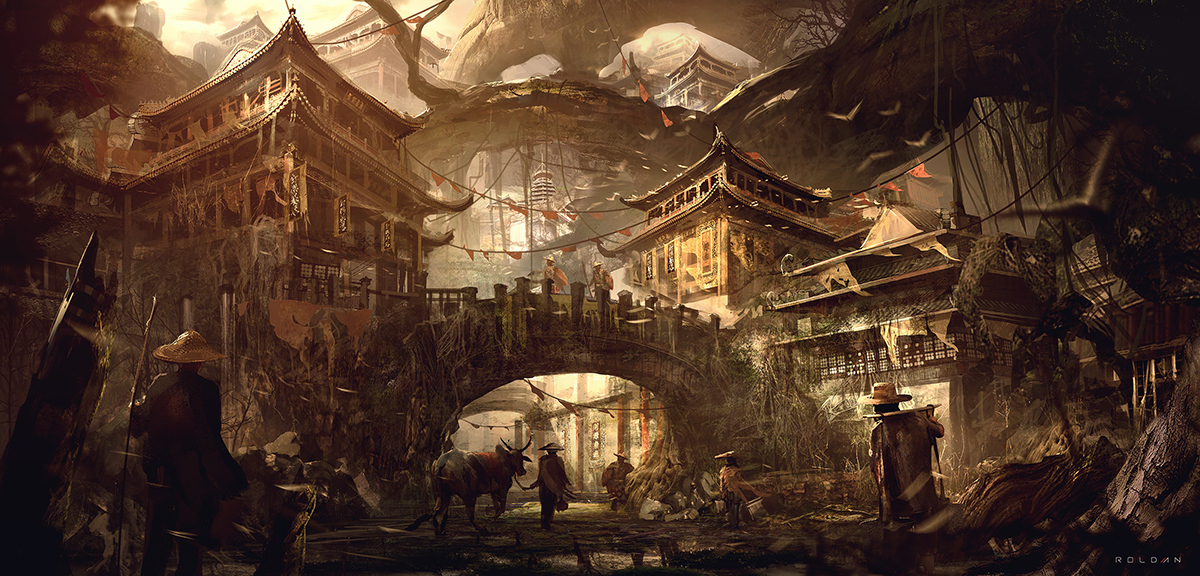
Juan has always been impressed by the amazing Chinese culture, so he was really excited to draw a representation of a little piece of this beautiful country
What has been your favorite project to work on/greatest artistic achievement?
For me, each project has been a great achievement, it has been a difficult path because in South America there is no concept art school (at least that I know of), so it has all been self-study. My job fills me with happiness and channels a passion that I want to take as far as I can.
One of the jobs that best fills me with gratification is working as a concept artist for director Ruben Latre. Ruben is a great person from whom I learned a lot. I love his style of work and working as a concept artist for films is one of the dreams I’ve pursued since the beginning. Hostage films has opened its doors for me and now I just hope to do my best and to participate in other productions.
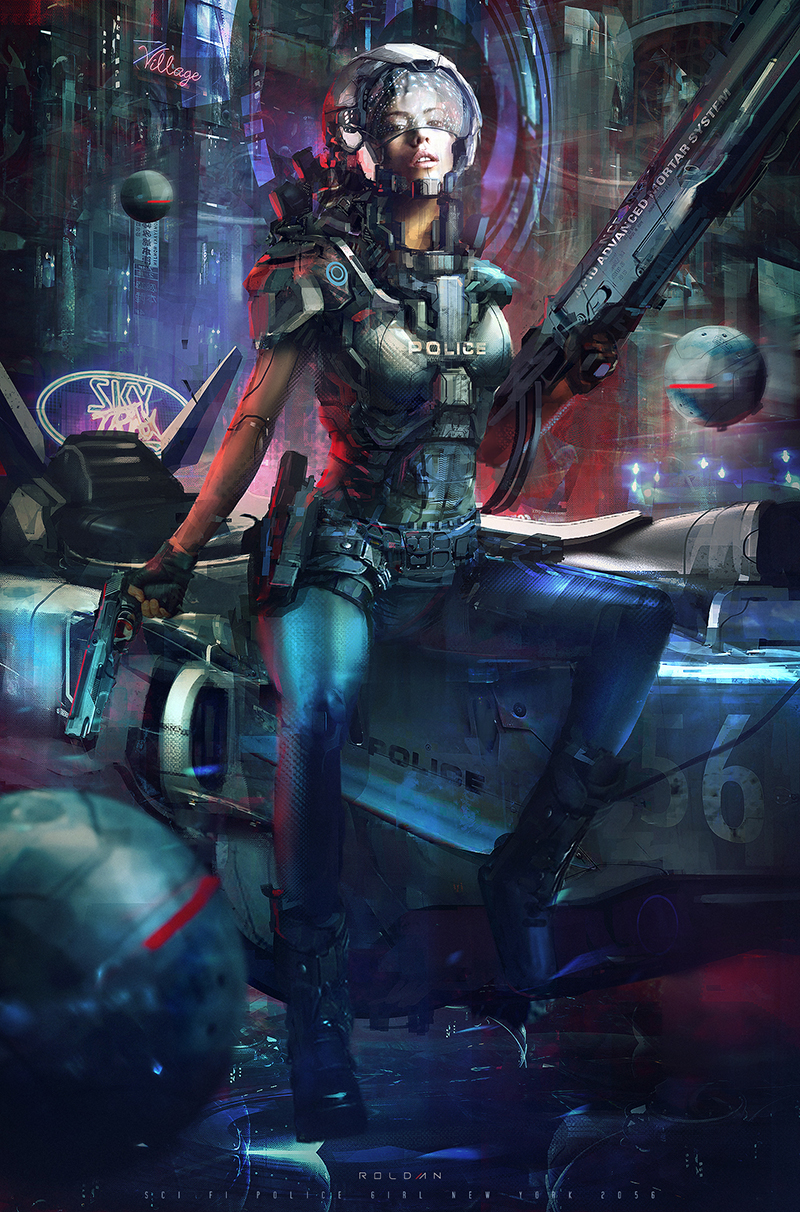
What would be your perfect project to work on?
I dream of working on AAA productions. I think that every new concept artist wants to work in a production for Marvel or DC comics, or studios like Weta, Naughtydog or Ubisoft. Many of my favorite artists and my heroes have worked on these and when I see their work it motivates me to keep learning and give my best to achieve it.
My ideal project would be to create my own IP and then see it on the big screen or on a AAA game. That’s one of the goals that I have long term and now I’m writing my first project, I hope to share it with you later.
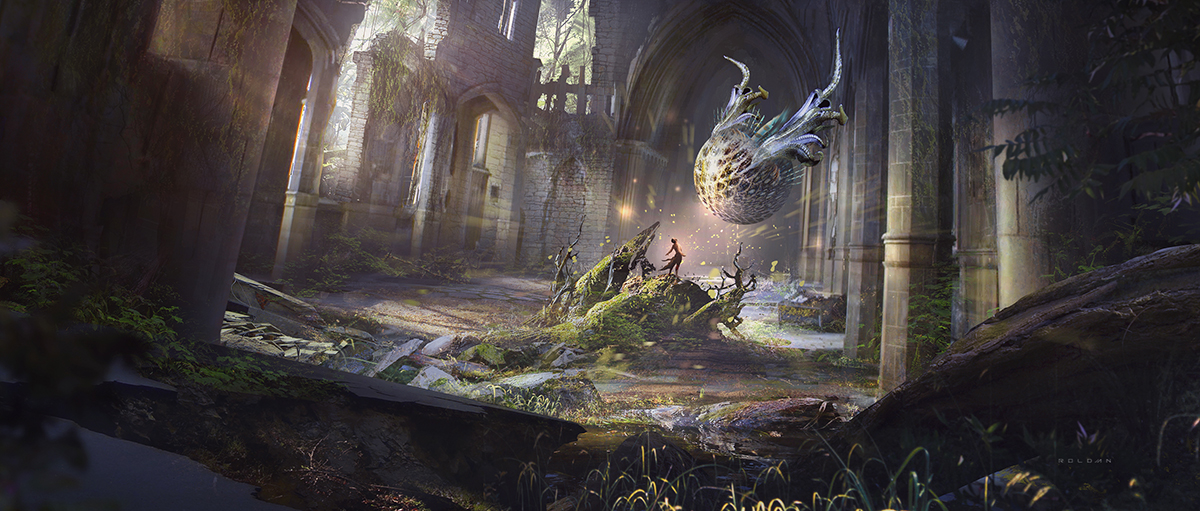
Here, the idea was to show the connection between a human character and a fantastic creature in a church’s ruins
“Another thing I want to do in the future is to improve my skills with 3D software for digital sculpting. You can really achieve hyper realistic and wonderful things with these tools”
Are there any other areas in the digital art world that you’d like to branch into (and why)?
One of the things I like to do is have my own digital graphic novel, for this there is much work ahead to do something shocking and with great quality.
Another thing I want to do in the future is to improve my skills with 3D software for digital sculpting. You can really achieve hyper realistic and wonderful things with these tools. I currently use 3D as a base for my projects, for the best angles, framing, lighting, and so on, I would use these tools much more to make realistic scenes and characters. Also having this skill in your portfolio is a very appreciated ingredient in the industry.
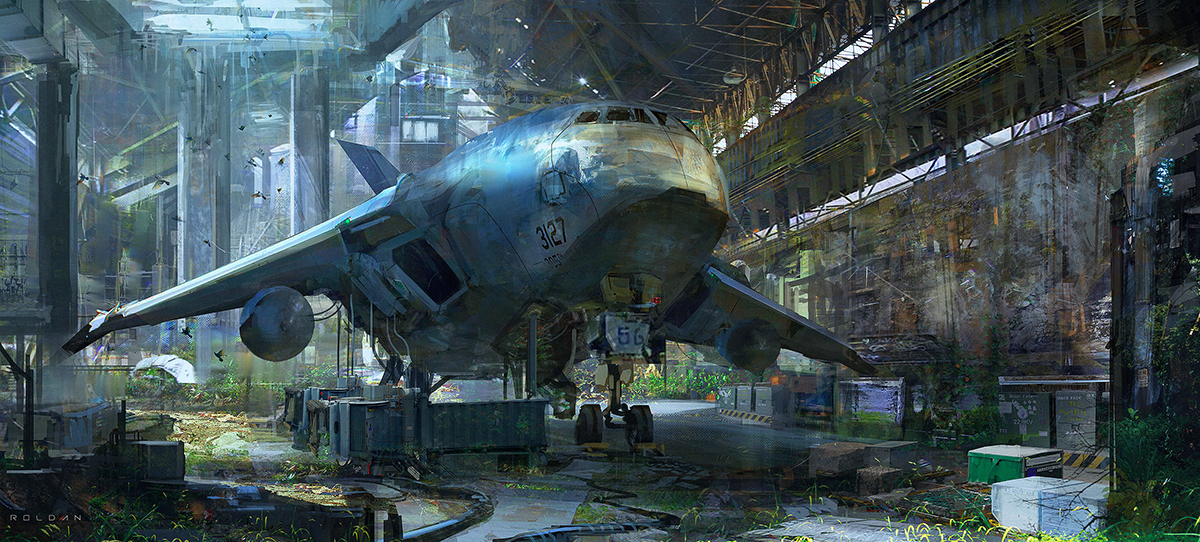
This concept was for a demo class where Juan showed his students how to integrate bushes, textures, shapes and nice colors into a simple composition
How do you keep your portfolio up to date and relevant?
Now I am trying to use my free time for my own projects and be able to share them publicly. Most jobs that I am currently working can’t be shown, as with the production of a movie or video game you have to wait for publication, sometimes a long time, to show these projects.
Another thing is that no matter what you do, if you want to draw robots, portraits, characters or whatever – do it. Each person has a different perception of the world, so one of your works is never the same as the work of another artist. The important thing is never to copy others ideas and try to improve your skills in terms of fundamentals and overall design. Learn to research well before developing an idea, use good reference images according to the topic and try to create fresh and new things. It helps to explore the local culture and history of your country of origin.
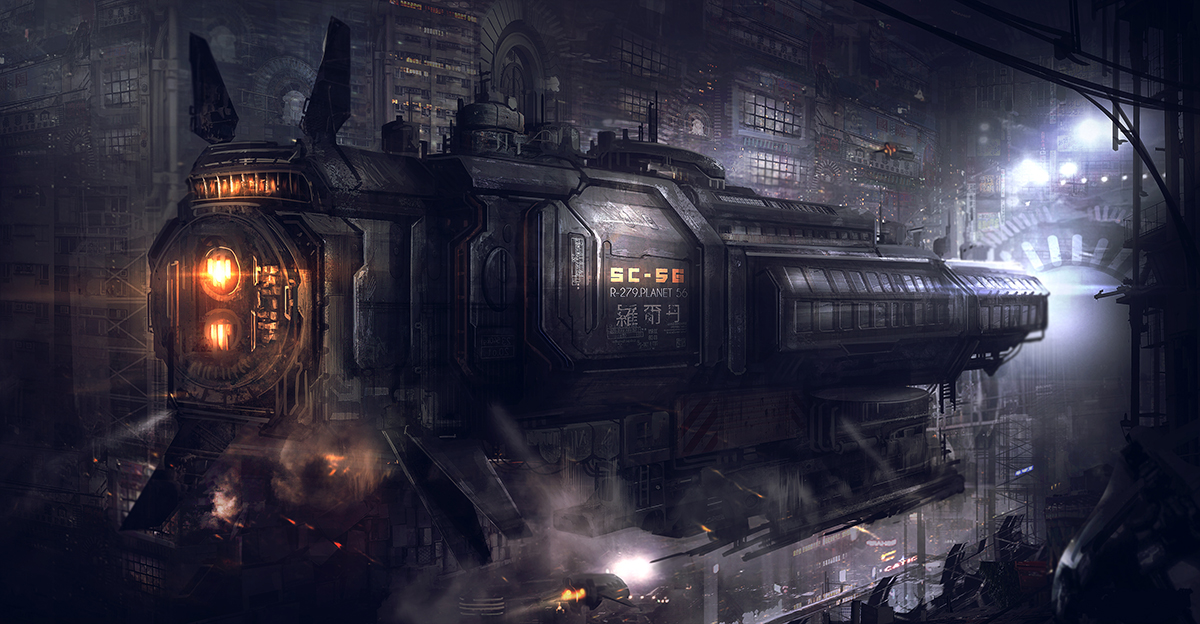
This illustration was inspired by the industrial revolution, represented in a distant future where the big train-ships surf giant underground cities.
Can you tell us what you are working on at the moment?
As I said before, right now I’m working as a freelance artist for Hostage Films on a film. I am also working on some indie studies from different countries for short films and doing some illustrations for different writers. Another of the things I’m focused now is the launch and positioning of my school of concept art in the city where I live, Medellin, Colombia.
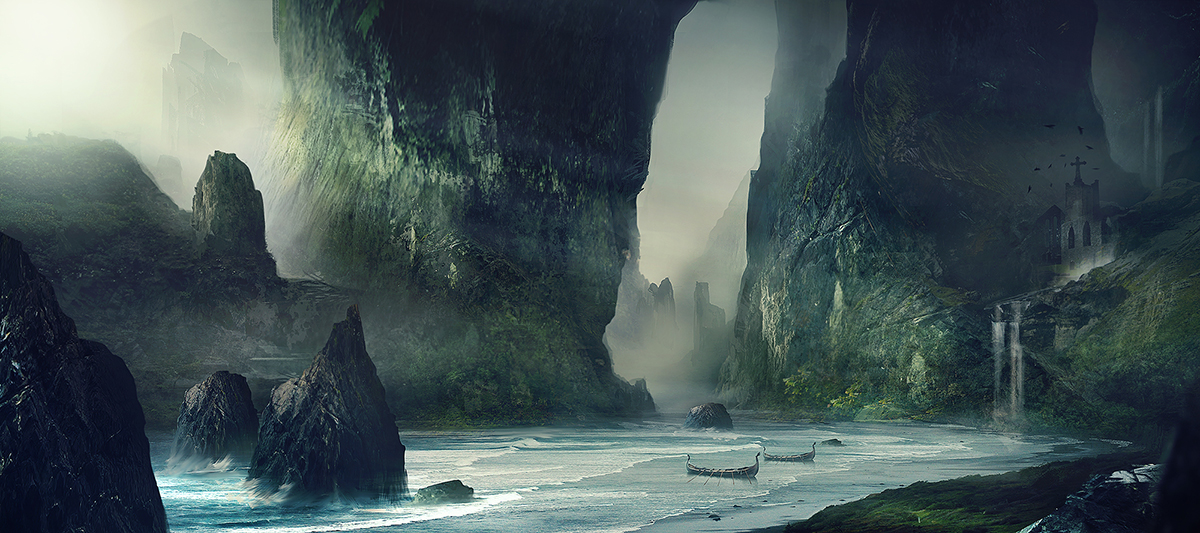
This concept was inspired by the amazing TV show, VIKINGS!
“Don’t get frustrated when you see people posting amazing work they claim to have done in 30 minutes – arriving at this level to make impressive sketches so quickly requires years of practice and experience”
If you could give future digital artists one piece of advice on working in the industry, what would it be?
Well, as you know, my career has been short so far, but I think my best advice is that before you show your work, make sure to learn and practice the basics of art. For this, you’ll be able to find many online schools, magazines and books that can help you understand the necessary methods for creating concept art. If you’re fortunate to have a local art school, make sure to get in there and learn from different people and different points of view.
It is also important not believe everything you see on the internet. The vast majority of jobs we see are promotional pieces to which they have dedicated lot of production time. Don’t get frustrated when you see people posting amazing work they claim to have done in 30 minutes – arriving at this level to make impressive sketches so quickly requires years of practice and experience. Don’t worry about the time it takes, we must first learn the basics, find different ways to solve problems and then start work, which with time and repetition will give greater flexibility to develop high-quality images and visualize ideas quickly and meet deadlines.
Finally, what can we expect to see form you in the future?
For now I’m trying to generate images with different methods and tools, so we will soon see images with an exploration of deeper color, greater presence of characters. I will also share works that represent the culture of my country, from realistic illustrations to futuristic visions of the continent where I live.
